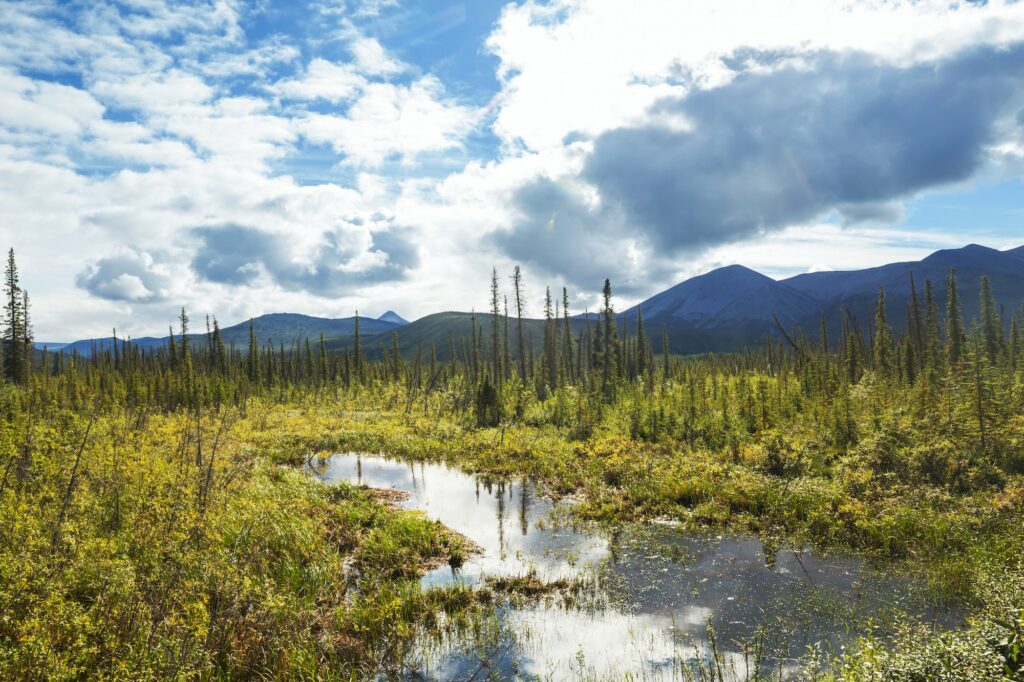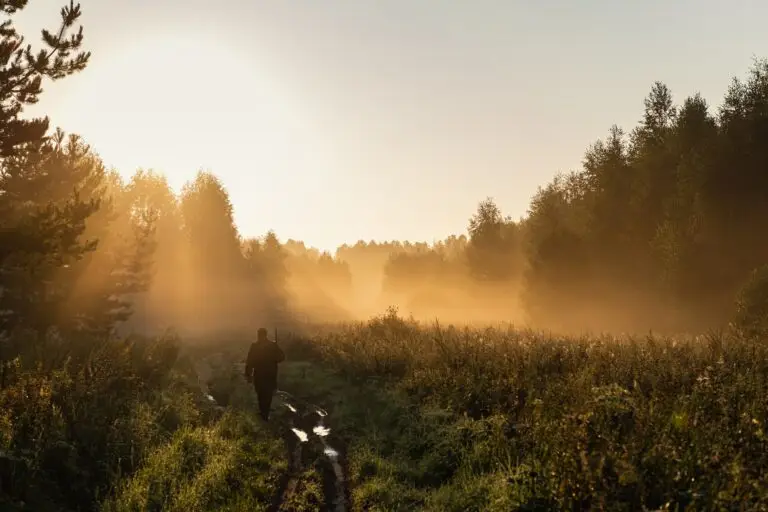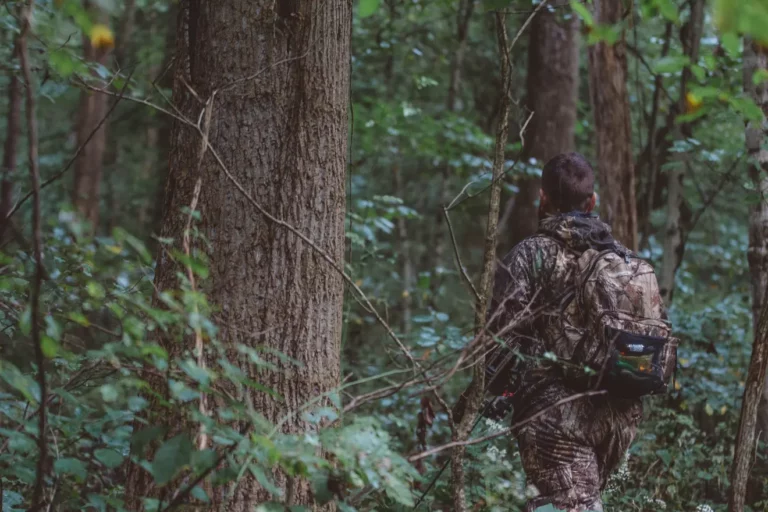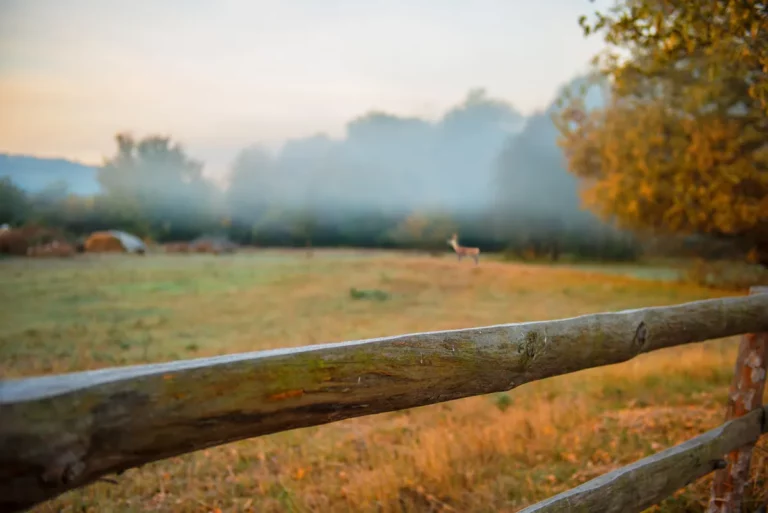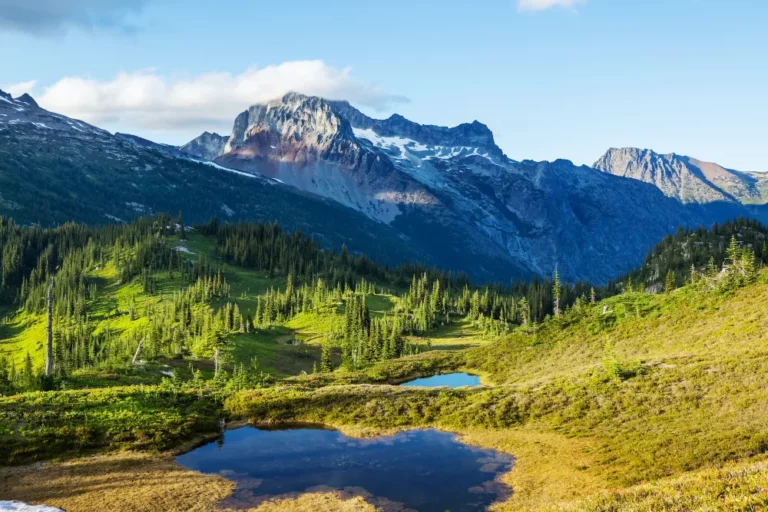Land of the Midnight sun, Alaska is a state renowned for its incredible hunting opportunities. Alaska Hunting embodies the very core of what makes an Elite Hunter, and the state attracts hunters from all over the world who are looking for a truly unforgettable experience. For most experienced stalkers, Alaska hunting is a must-do addition on all bucket lists.
Table of Contents
Alaska is home to a wide variety of big game, including the heavily sought-after moose, caribou, Dall sheep, and a variety of controversial brown bear hunting. Not only does Alaska offer abundant game, but it also boasts absolutely stunning landscapes, including vast wilderness, majestic mountains, and pristine waters.
The history of hunting in Alaska is rich and deeply intertwined with the state’s culture and traditions. For thousands of years, Alaska Native peoples have hunted for subsistence and cultural reasons, and today, hunting remains an essential part of life for many Alaskans.
Let’s take the next step in our hunting journey, and learn everything there is to know about what makes Alaska hunting such an elite experience.
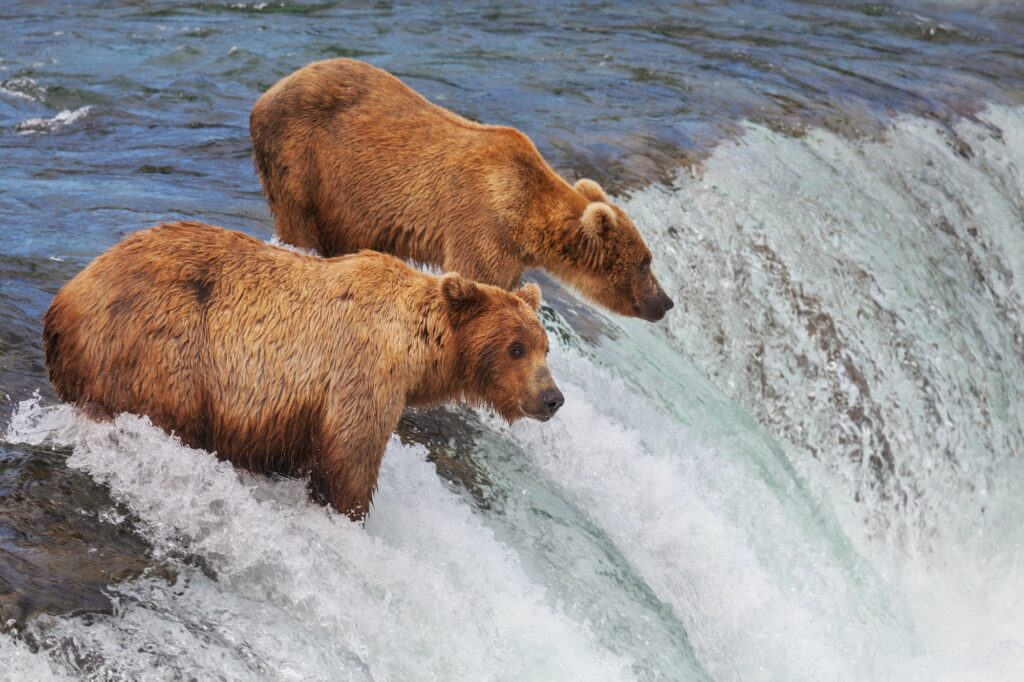
When is the Alaska Hunting Season?
The Alaska hunting season varies from year to year, and there are no specific released dates for the 2024 season yet. However, below are the usual dates for each animal based on previous years.
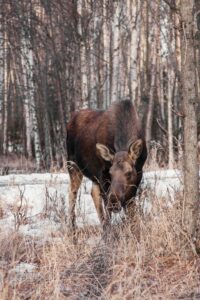
Moose: August 20 – September 25 and October 10 – 30, depending on the game management unit.
Caribou: Late August through November, depending on the game management unit and the specific herd.
Dall Sheep: August 10 – September 20 (September 1st for non-residents)
Mountain Goat: August 1 – November 15
Brown Bear: Spring season (April 1 – May 31) and fall season (September 1 – November 30)*
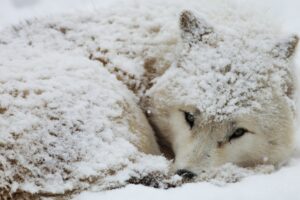
Black Bear: August 1 – June 30, depending on the game management unit and the specific hunt area.
Wolf: August 1 – April 30, depending on the game management unit and the specific hunt area.
Waterfowl: September through December, depending on the species and the specific hunt area.
Upland Game Birds: August through April, depending on the species and the specific hunt area.
What Climate Can You Expect?
Small Game: August through April, depending on the species and the specific hunt area.
Alaska has varying climates depending on which time of the year you decide to take up the hunt. Unlike a majority of other states, Alaska offers a great selection of hunting outside of the usual fall seasons. depending on when you head out, make sure you do proper research on what weather you can expect!
Spring (March through May):
Spring is generally considered the shoulder season in Alaska, as it is a transitional period between winter and summer. In some parts of the state, snow may still be on the ground, while in others, the first signs of greenery may start to appear.
Temperatures can range from below freezing to the 50s and 60s Fahrenheit (10-15°C), and weather can be unpredictable, with frequent rain and snow showers.
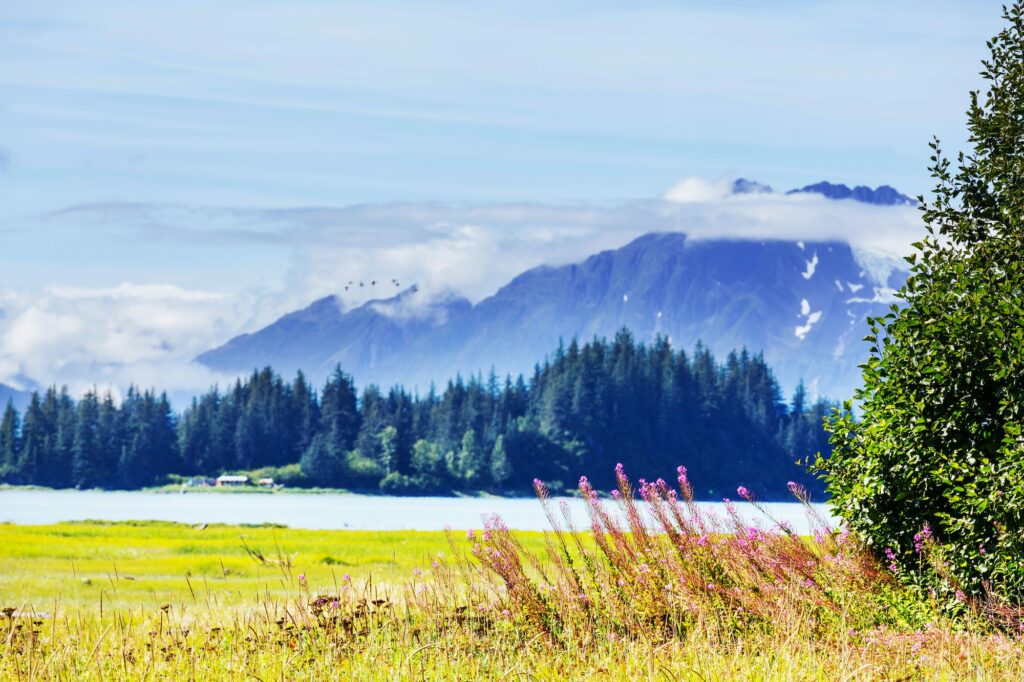
Summer (June through August):
Summer is the warmest and sunniest time of year in Alaska. Temperatures can range from the 60s to the 80s Fahrenheit (15-30°C) or higher, depending on the location.
However, even in the summer months, it can still get chilly at night, especially in more remote areas, so make sure you have a well insulated tent if staying the night. Weather is generally drier and more stable during the summer months, with long daylight hours.
Fall (September through November):
Fall is a beautiful time to visit Alaska, as the leaves change color and wildlife becomes more active in preparation for winter. Temperatures can range from the 20s to the 50s Fahrenheit (-5 to 10°C), and weather can be variable, with occasional snow or rain showers. The days start to get noticeably shorter, with less daylight than in the summer months.
Winter (December through February):
Winter in Alaska is a cold but magical time, with snow-covered landscapes and lots of potential to see the Northern Lights. Temperatures can range from the single digits to below freezing, and in some parts of the state, temperatures can plummet to -40°F (-40°C) or lower.
Snowfall can be heavy, and daylight hours are limited, with some parts of the state experiencing only a few hours of daylight per day.
Depending on which season you decide to trek out in, the Alaska hunting climate might be significantly harsher than you’re used to depending on your location. Ensure that you’re always bringing the right gear, know what to expect and that you’re comfortable in climates that might be windier, colder, and wetter than usual!
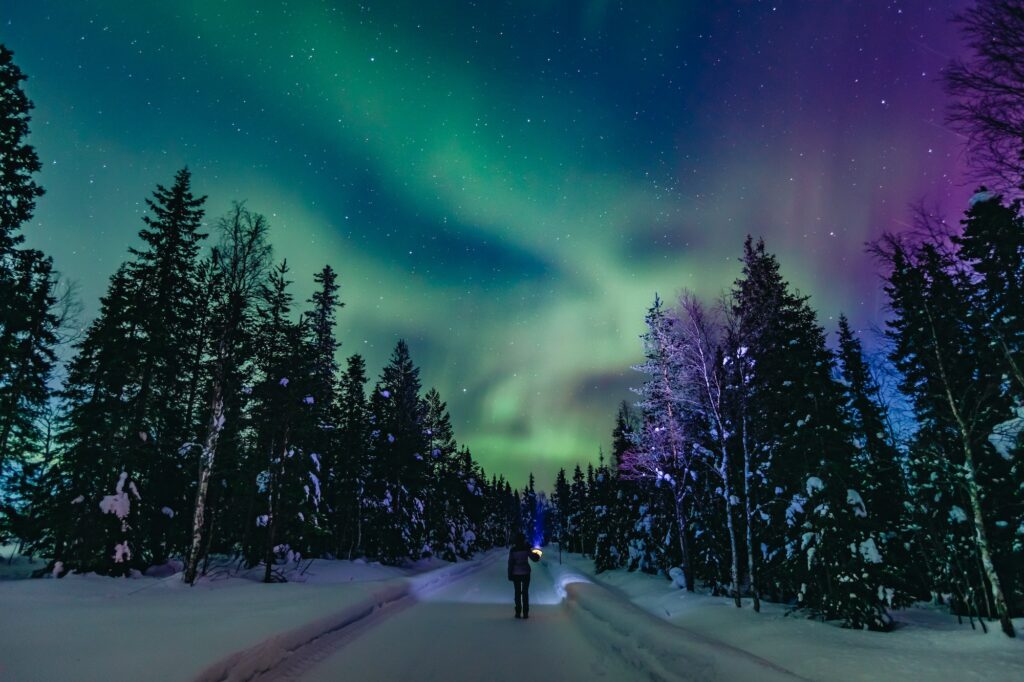
Hunting Licenses & Regulation
Hunters in Alaska must obtain a valid hunting license before they can hunt. Several different types of licenses are available, including resident, non-resident, and non-resident alien licenses. In addition to a hunting license, hunters may also need to obtain special permits or tags for certain species, such as brown bears or caribou.
Who needs an Alaska Hunting License?
Everyone, regardless of experience or age, is required to obtain a valid Alaska Hunting license before stalking any form of game. There are several kinds of licenses, with varying costs and eligibility.
How much does an Alaska Hunting License Cost?
Resident hunting licenses
Annual: $45
One-day: $20
Three-day: $30
Nonresident hunting licenses
Annual: $160-$1,100 (depending on the species and length of the license, check here for more information)
One-day: $20
Three-day: $50
Military hunting licenses:Annual: $10
Disabled veteran hunting licenses:Annual: $10
Senior hunting licenses:Annual: $5
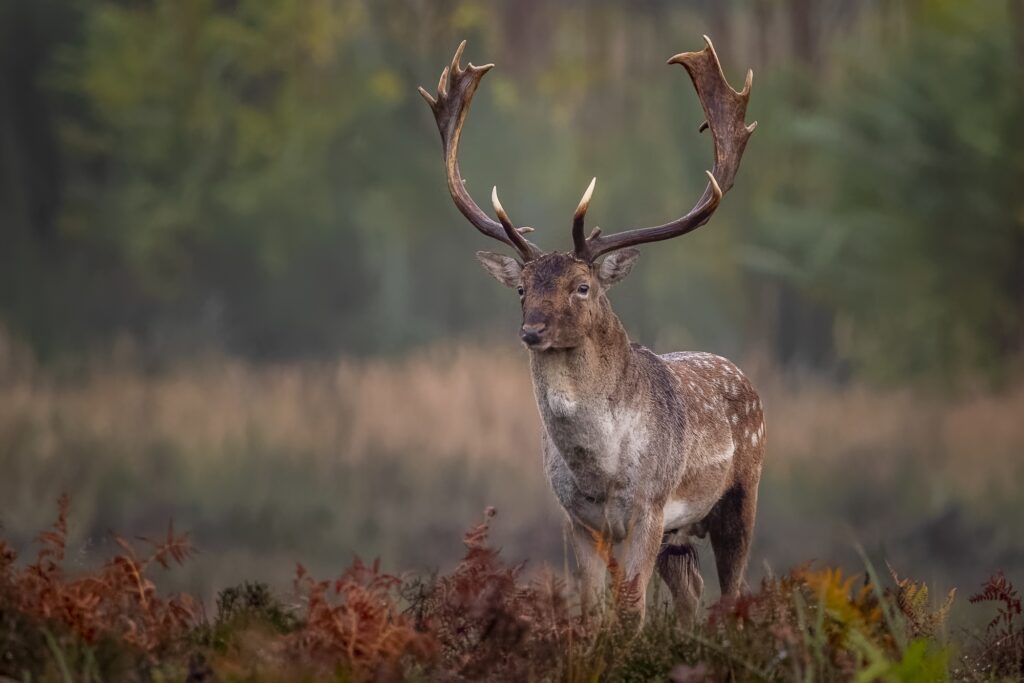
Who’s eligible for which kind of License?
Resident hunting licenses are available to Alaska residents and are valid for one year from the date of purchase. Resident licenses are available for both big game and small game hunting.
Nonresident hunting licenses are available to individuals who are not Alaska residents. Nonresident licenses are available for both big game and small game hunting and are valid for various durations depending on the type of license and the specific hunt.
Military hunting licenses are available to active-duty members of the military stationed in Alaska and their dependents. It is valid for one year after the purchase. Note that veterans are not eligible.
Disabled veteran hunting licenses are available to Alaska residents who are veterans with a 50% or greater service-connected disability.
Senior hunting licenses are available to Alaska residents who are 60 years of age or older.
How do I buy an Alaska Hunting License?
Alaska offers many different ways of buying your hunting license. Regardless of where you buy your license, it will cost the same and have the same effect – and the variety of purchase methods is solely based on your preference.
Online
You can purchase a hunting license online through the Alaska Department of Fish and Game website. You will need a valid credit card to complete the transaction.
In-person
You can purchase a hunting license in person from an authorized license vendor, which may include sporting goods stores, bait and tackle shops, and some ADF&G offices. You can find a list of authorized license vendors on the ADF&G website.
By mail
You can also purchase a hunting license by mail by sending a completed license application and payment to the ADF&G license section. The address is available on the application form, which can be downloaded from here after a quick registration form completion.
Phone
You can purchase a hunting license over the phone by calling the ADF&G license office at (907) 465-2376. You will need a valid credit card to complete the transaction.
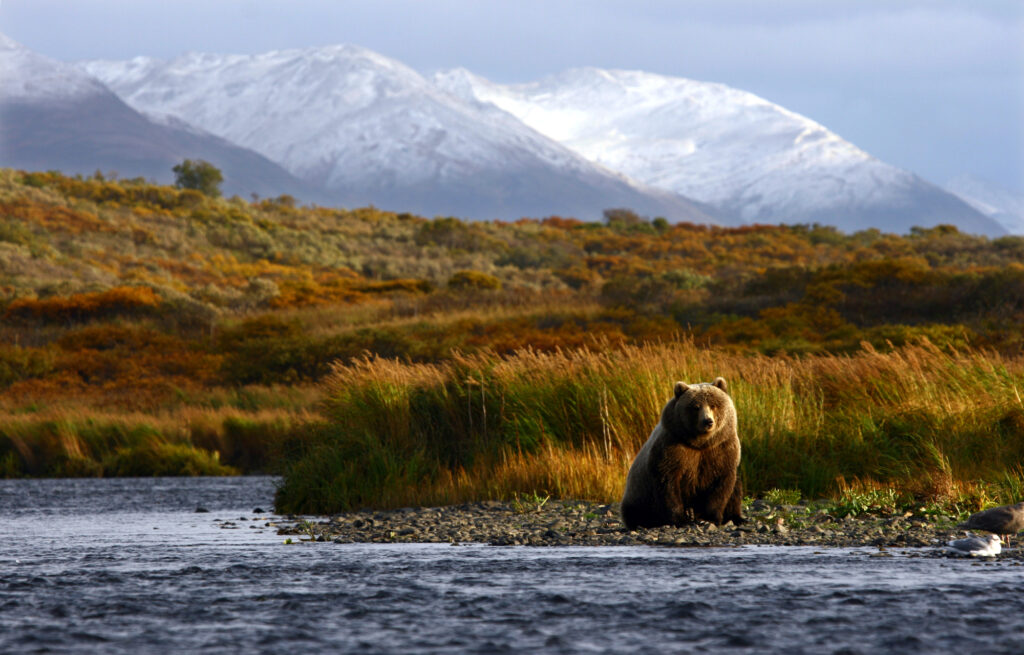
What to hunt in Alaska
Alaska is home to some of the most exciting and challenging hunting opportunities in the world, with a diverse range of game species available to hunt throughout the state. From the majestic caribous to the elusive mountain goat, Alaska’s game animals offer a unique and rewarding hunting experience for those willing to take on the challenge.
Caribou
Alaska is home to three different subspecies of caribou, including the barren ground caribou, the central Arctic caribou, and the Porcupine caribou.
These animals are found all throughout the state and offer a wildly unique hunting opportunity for both residents and non-residents. Hunting caribou in Alaska is a true wilderness adventure, as these animals roam across vast expanses of tundra and mountain terrain – and not to mention their majestic beauty.
Moose
Alaska is famous for its massive bull moose, which can weigh over 1,500 pounds and have antlers that span over six feet! Moose are also found all throughout Alaska and are typically hunted in the fall during the breeding season. Moose hunting in Alaska requires a high level of skill and endurance, as they are notoriously elusive and often reside in a lot more remote and challenging terrain than typical game.
Mountain goat
The mountain goat is a unique and challenging game animal found in Alaska’s high alpine regions. These animals are known for their surefootedness and agility in steep and rocky terrain, making them a invredibly challenging quarry for most hunters. Mountain goat hunting in Alaska requires excellent physical fitness and marksmanship skills, as well as the ability to navigate challenging mountain terrain.
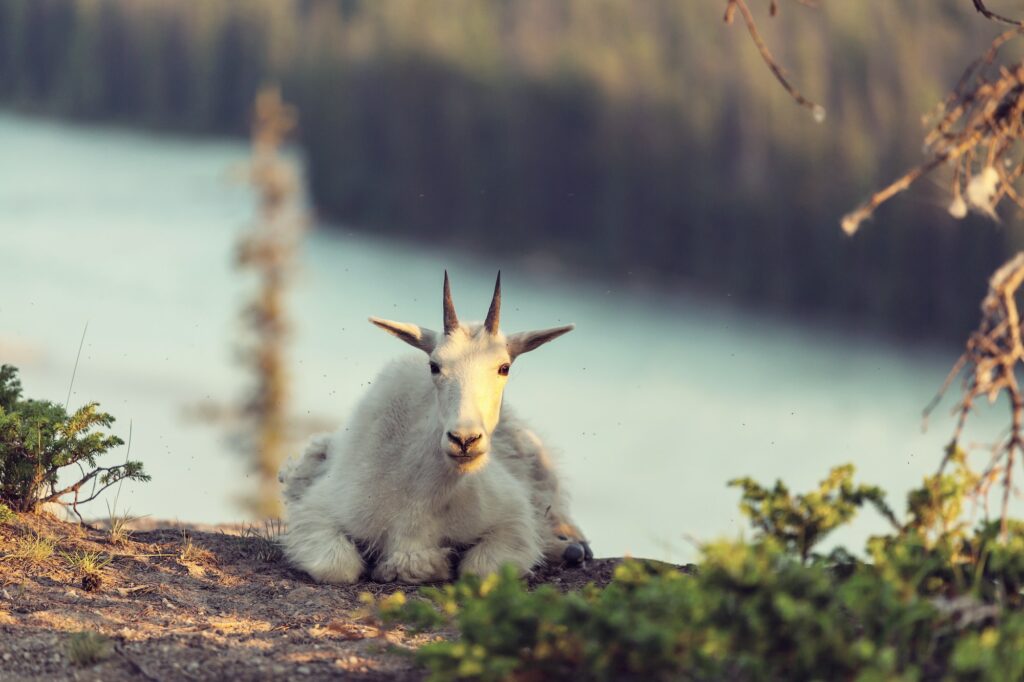
Dall sheep
The Dall sheep is a symbol of Alaska’s rugged wilderness and is one of the most sought-after big game animals in the state.
These animals are found in high alpine regions and offer a challenging and rewarding hunting experience. Hunting Dall sheep in Alaska requires a high level of physical fitness, as well as excellent marksmanship skills and the ability to navigate challenging mountain terrain.
The Grizzly Controversy
One of the largest controversies surrounding Alaska hunting is brown bear baiting and trophy hunting. These are hunters who spend obscure amounts of money to fly in and spend weeks baiting beautiful, male grizzlies with food to lure them into traps – making them bigger, slower, and easier to shoot.
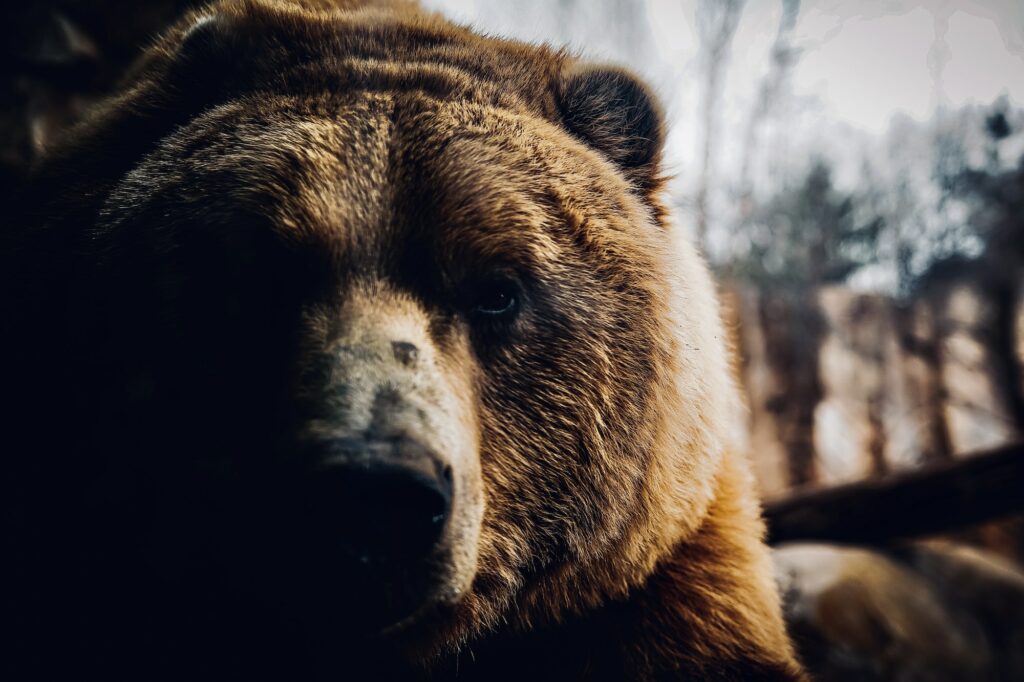
If you have ever been lucky enough to spot a brown bear in the wild, you know that there are few things more majestic and awe-inspiring on our earth. Being in the presence of such a grand predator completely transports you away from reality. Truly, when in the presence of a grizzly, the rest of the world does not even seem to matter in the slightest.
Alaska remains the only state where brown bear baiting and trophy hunting are legal. In my opinion, using unfair tricks and traps to lure such a beautiful animal to its death, for nothing more than some paws and a head to mount on your wall, is not something that makes you an elite hunter.
In addition to the immorality of hunting an animal that has been baited in this way, brown bear hunting also does nothing for the conservation of Alaska and its gorgeous wildlife. In fact, most of these hunts target dominant males, who are a vital part of maintaining a healthy population.
An Elite Hunter always respects their prey. Remember, hunting isn’t just killing for sport, it is about going back to our primal roots as humans. It’s about conservation, nature, and appreciating the beautiful world we are in. In my opinion, luring one of the most majestic and beautiful creatures in our country with such cowardly methods isn’t hunting, it’s killing.
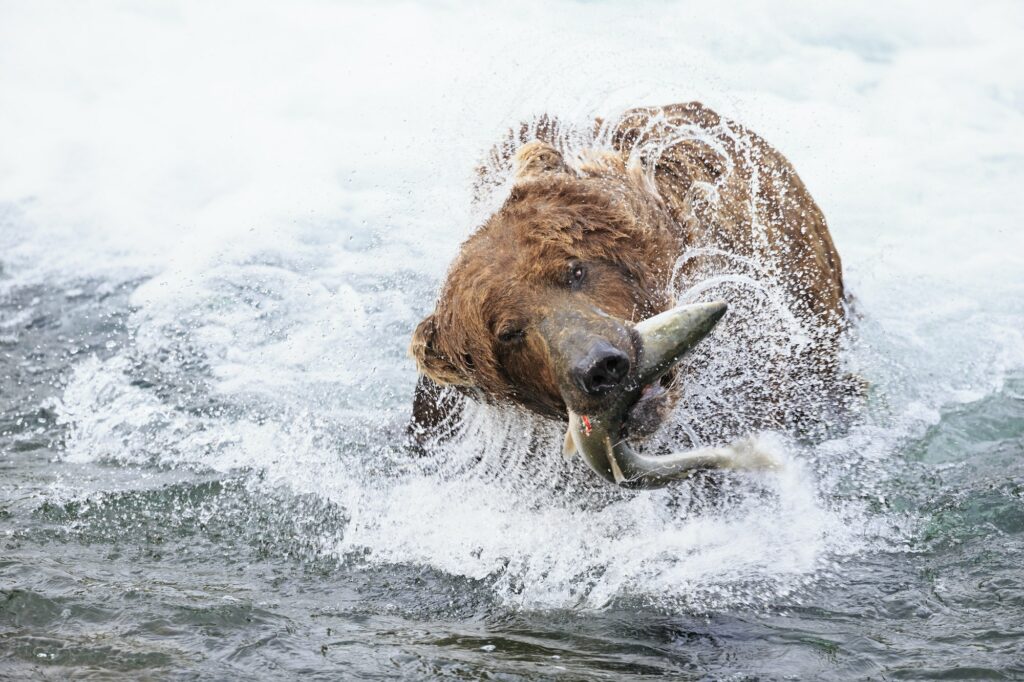
There are many ways to experience the beauty of Alaska’s wilderness without causing harm to its inhabitants. We urge you to always put in the effort to respect and protect the natural world, so that it may continue to inspire and awe us for years to come.
No matter what you hunt, whether it’s a grouse, elk, squirrel, coyote, or even fish – always respect your prey.
Hunting Areas:
As you probably already know, Alaska is an absolutely massive state. It features endless tundras, glaciers, mountains, and forests – and there are literally hundreds of hunting locations. To get you started on what you can expect on a hunt in Alaska, here are some of our favorite spots:
The Kenai Peninsula is a popular destination for moose and black bear hunting. The area is also home to caribou, Dall sheep, and mountain goats. The terrain ranges from forests to tundra, with rivers and lakes.
The Arctic North Slope is a remote and challenging hunting destination, with extreme weather conditions and limited infrastructure. The area is home to caribou, muskox, and grizzly bears (so be aware). The environment is a mix of tundra, mountains, and ice.
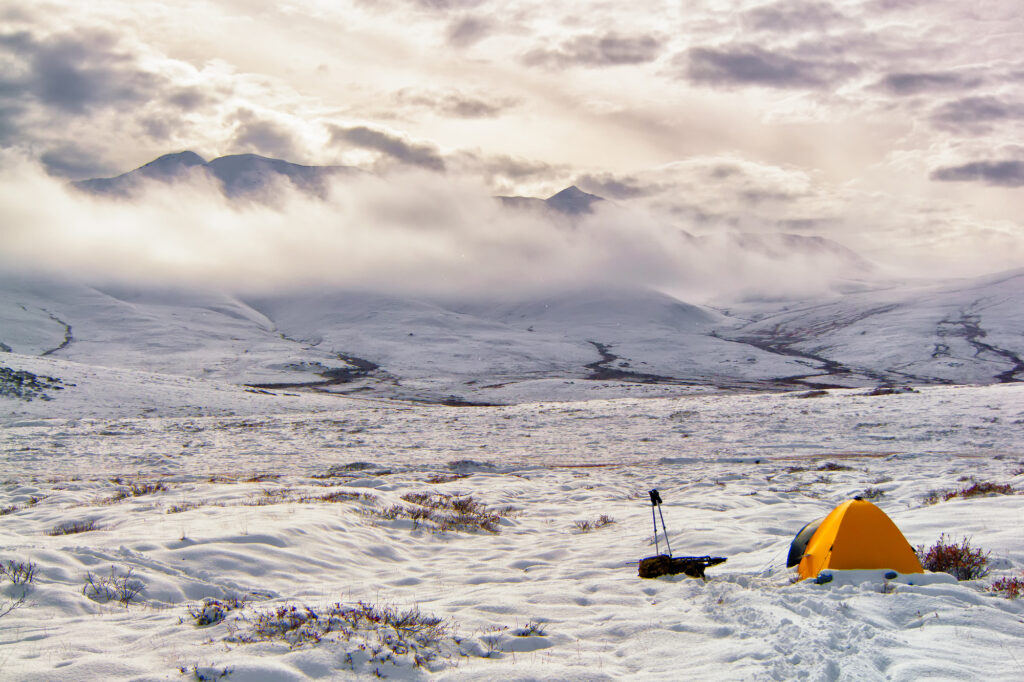
The Brooks Range is a vast wilderness area with some of the most remote and challenging hunting opportunities in Alaska. The area is home to caribou, Dall sheep, grizzly bears, and wolves. The environment is mountainous, with glaciers, tundra, and boreal forests.
Southeast Alaska is a rainforest region that offers a unique hunting experience. The area is home to Sitka blacktail deer, black bears, and mountain goats. The environment is a mix of forests and coastal areas, with fjords and glaciers.
Interior Alaska is a vast area that offers a range of hunting opportunities, including moose, caribou, and Dall sheep. The environment is a mix of forests, tundra, and mountains, with numerous lakes and rivers. You’d never believe water could have such a deep blue color.
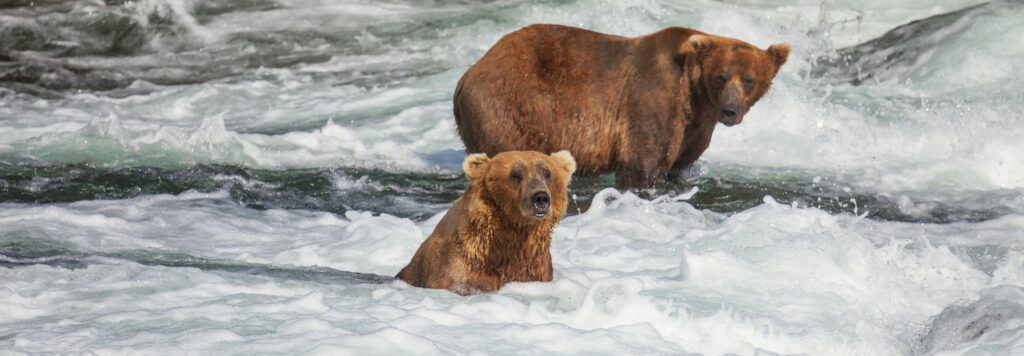
The Deep History of Alaska Hunting
Alaska has a long and rich history of hunting, dating back thousands of years to the indigenous peoples who relied on hunting for their survival. Hunting played a critical role in the subsistence and culture of Alaska Native communities, who hunted a variety of game, including caribou, moose, Dall sheep, and marine mammals such as seals and whales.
In the late 18th and early 19th centuries, hunting in Alaska became an important economic activity for non-Native settlers and fur traders. The fur trade brought a surge of hunters and trappers to Alaska, who hunted fur-bearing animals such as beavers, otters, and foxes. This led to the establishment of trading posts and the growth of the Alaska fur industry.
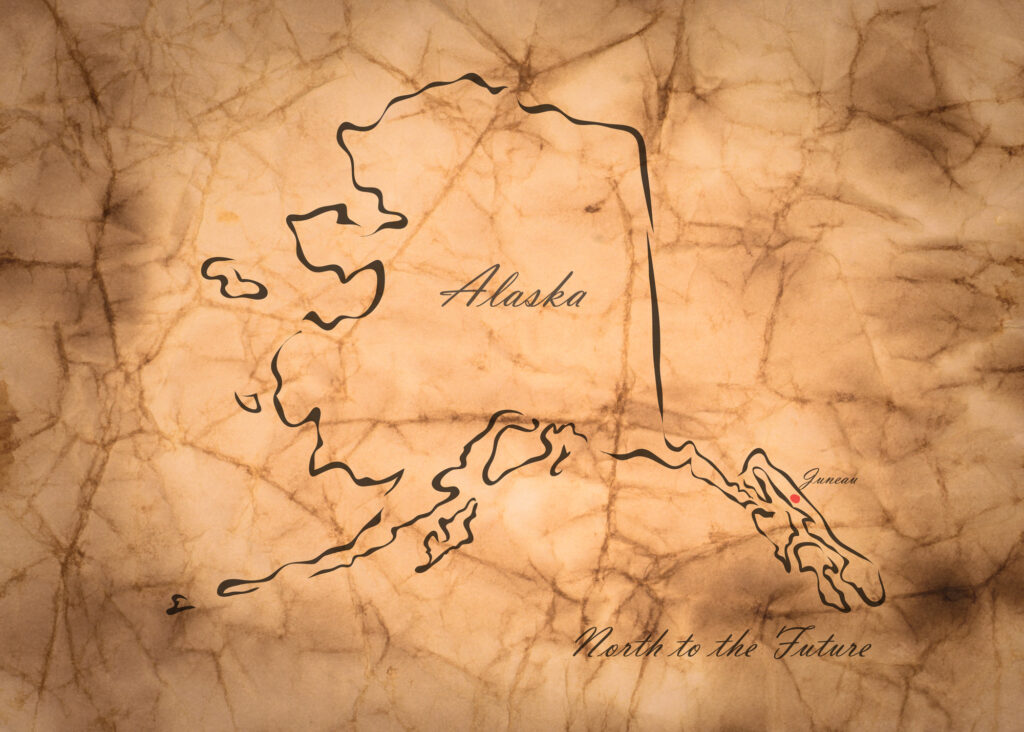
In the early 20th century, wildlife conservation became a major concern in Alaska, as overhunting and habitat destruction threatened many species. The U.S. government began to regulate hunting and establish protected areas, such as national parks and wildlife refuges, to preserve Alaska’s natural resources.
Today, hunting is still an important part of Alaska’s culture and economy, with both subsistence and sport hunting practiced throughout the state. Alaska has some of the most extensive hunting regulations in the United States (except for brown bears, apparently), with strict rules on bag limits, hunting seasons, and hunting methods to ensure the sustainability of game populations.
The history of hunting in Alaska reflects the complex interactions between Native communities, non-Native settlers, and the natural environment. Hunting in Alaska continues to evolve as new challenges and opportunities arise, but remains an important part of the state’s heritage and identity.
Why Alaska Hunting?
As you can see, Alaska offers some of the most elite hunting experiences in the world. With its vast wilderness, diverse wildlife, and rich hunting culture, Alaska hunting takes the sport to another level. From the rugged mountains of Kodiak Island to the vast tundra of the Arctic North Slope, there is a hunting adventure for all varieties of hunters and interests.
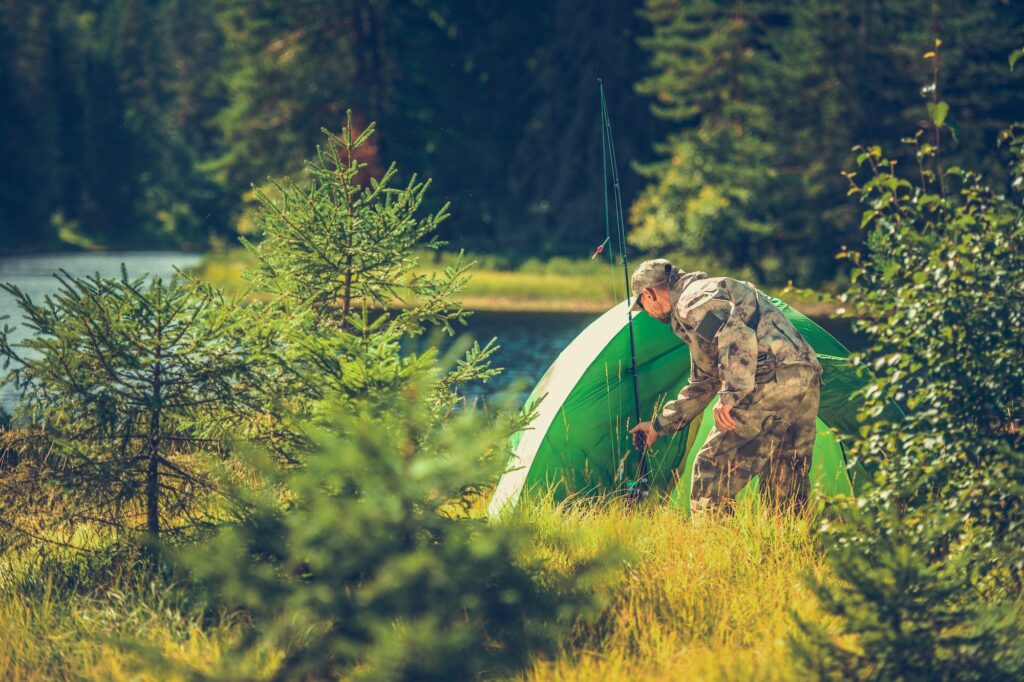
But beyond the thrill of the hunt, Alaska’s hunting heritage reflects a deep connection between humans and nature and a commitment to preserving and respecting the natural world. Did you know that in 2021, a 90-year-old hunter in Alaska became the oldest person to ever harvest a Dall sheep? I dream to beat that record one day!
His dedication and passion for hunting is a true testament to the enduring appeal and value of Alaska hunting. A state famous for its wildlife, having the chance to pursue a game in the massive state is an honor and a luxury. It’s crucial that we as hunters maintain the responsibility of respecting the state’s nature and wildlife.
Looking for information on hunting in other states? Check out our other state guides here.
Happy Hunting!
